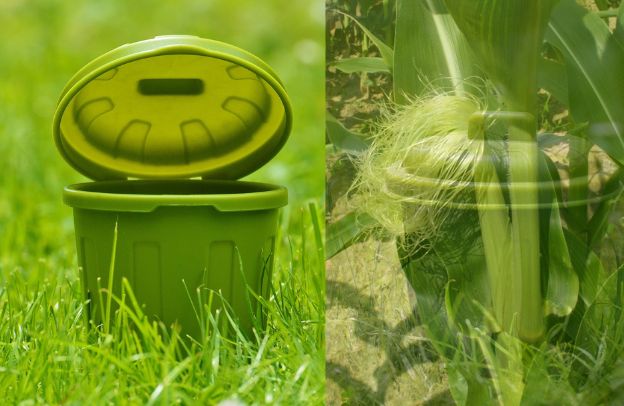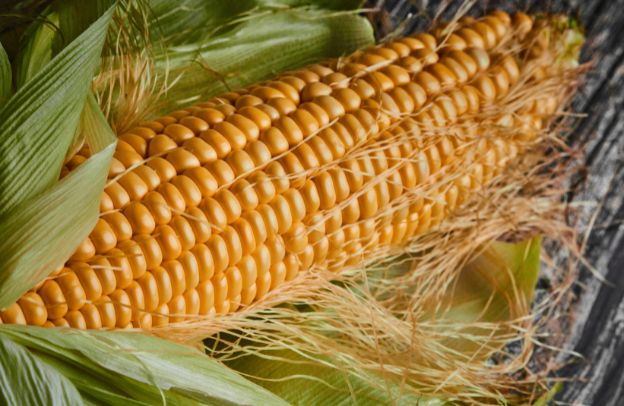Unlocking the Potential of Corn-Based Bioplastics: A Sustainable Venture for African Diaspora Entrepreneurs

Have you ever wondered if something as humble as corn could play a pivotal role in solving some of the world’s most pressing problems? From plastic pollution to food insecurity, the challenges seem overwhelming. But what if the key to solving them lies in a simple crop that is already abundantly grown in Africa corn?
Learn How to Leverage Your Story through our Story To Asset Transformation (S.A.T) Framework.
More specifically, what if you, as a part of the African diaspora, could tap into the potential of corn-based bioplastics to fuel both sustainable development and economic growth in your home country?
In a world where plastic pollution is a mounting crisis and environmental sustainability has become a critical global focus, the need for alternatives to petroleum-based plastics has never been greater.
As an entrepreneur with ties to the African continent, you are uniquely positioned to leverage both the agricultural resources and the global demand for sustainable solutions.
Bioplastics made from corn present an exciting opportunity to not only address the environmental challenge but also drive agricultural innovation, create jobs, and bolster economic growth in Nigeria and across Africa.
In this article, we will explore how you can harness this potential, contribute to sustainable development, and tap into a growing market that has the power to transform the African economy.
The Nigerian Agricultural Advantage: Maize as a Cornerstone of Opportunity
Nigeria is one of the largest producers of maize in Africa. With a production of over 10 million metric tons annually, maize (corn) is not just a staple food but also an essential component of Nigeria’s agricultural identity (FAO, 2023).
It is grown in various regions of the country and has established itself as a key crop in the fight against hunger and poverty. However, Nigeria’s agricultural sector is still grappling with challenges like food insecurity, outdated farming techniques, and underutilized value chains.
Despite these hurdles, the sheer volume of maize production makes Nigeria an ideal place to tap into the bioplastics industry, especially as the world looks for more sustainable alternatives to traditional plastics.
Bioplastics, made from renewable resources such as corn, are becoming an increasingly viable option for replacing petroleum-based plastics. Corn-based bioplastics, specifically, offer several advantages, including reduced carbon footprints, biodegradability, and compostability.
Given Nigeria’s strong maize production capabilities, the country has a unique opportunity to capitalize on this global trend.
As a member of the African diaspora, you could play a crucial role in driving this change, creating a positive ripple effect in both your business and the agricultural sector.
According to an article by the FAO, the value chain development pillar focuses on creating sustainable infrastructure, improving the environment, and enhancing market accessibility to support the production and commercialization of agricultural goods in key regions of the country.
This initiative prioritizes three major commodities, cassava, tomato, and maize, and specifically targets states with high agricultural potential and significant poverty levels, aiming to boost both productivity and economic opportunities for local communities.
What Are Bioplastics? A Green Revolution in the Making
Bioplastics are plastics made from renewable biomass sources, such as plants, starch, and algae, as opposed to the traditional plastics made from fossil fuels like oil and natural gas.
As the world seeks alternatives to plastic that can reduce harmful environmental impacts, bioplastics offer an eco-friendly solution. Among the various bioplastics, corn-based bioplastics are some of the most promising because of corn’s widespread availability, low cost, and ease of cultivation.
Corn-based bioplastics are produced by fermenting corn starch or corn syrup to create a polymer that can be molded into a variety of shapes, much like traditional plastics.
The benefits of using bioplastics over conventional plastics are numerous, including a reduced reliance on fossil fuels, a smaller environmental footprint, and the fact that bioplastics are biodegradable or compostable.
This makes them an attractive option for environmentally-conscious businesses and consumers alike.
See also: How To Make Corn-Based Ethanol At Home
A Step-by-Step Guide to Making Corn-Based Bioplastics
If you’re considering entering the corn-based bioplastics market, it’s essential to understand the process involved in making these sustainable alternatives.
The process can be broken down into several manageable steps that can be scaled depending on the needs of your business. Here’s how you can make corn-based bioplastics:
Gathering the Materials
- Fresh or dried corn kernels (untreated)
- Water
- Enzymes or bacteria (used to convert starch into polymers)
- A grinder or mill (to grind corn kernels into fine meal)
- A fermentation vessel (airtight and able to withstand temperature fluctuations)
- Molds or shaping tools (to form bioplastic products)
- Drying equipment (optional but useful for creating durable bioplastics)
Grinding the Corn
Begin by grinding the corn kernels into a fine meal. This can be done using a grinder or mill.
Creating the Slurry
Mix the ground cornmeal with water to form a slurry. The slurry helps create the necessary texture for fermentation.
Fermentation
Add enzymes or bacteria to the slurry. These organisms will break down the starch in the corn and convert it into polymers that can be shaped into plastic-like materials. Fermentation typically lasts several days, and monitoring temperature and pH levels is essential for optimal results.
Shaping the Bioplastic
Once fermentation is complete, the bioplastic mixture can be poured into molds or shaping tools to form products.
Drying
Dry the bioplastics to ensure they are stable and durable. Depending on the desired application, this can be done using drying equipment or air-drying methods.
By understanding and mastering this process, you can begin producing corn-based bioplastics in small quantities to test the market or scale it up for industrial production as the demand grows.
Applications of Corn-Based Bioplastics: From Packaging to Automotive Parts
The versatility of corn-based bioplastics makes them suitable for a wide range of applications.
As the global demand for sustainable products continues to grow, businesses that embrace bioplastics stand to benefit not only financially but also in terms of corporate social responsibility.
Here are a few key industries that could benefit from the rise of corn-based bioplastics:
- Packaging: The most common use of bioplastics is in packaging materials. Bioplastics can replace traditional plastic packaging, especially in the food and beverage industry, providing a sustainable alternative to plastic bottles, food containers, and packaging films.
- Agriculture: Bioplastics can also be used for agricultural products, such as biodegradable pots and plant wraps, which decompose naturally without harming the environment.
- Automotive: The automotive industry is another area where bioplastics are making inroads. From interior car parts to external body components, bioplastics are being used to reduce the environmental impact of car manufacturing.
- Textiles: Bioplastics are also being used in the textile industry to make fabrics that are not only durable but also biodegradable.
See also: How To Produce Maize In Nigeria
Creating Jobs and Strengthening the Agricultural Economy
The bioplastics industry is not just about producing a more sustainable product, it’s also an economic opportunity.
By investing in corn-based bioplastics production, you can help create jobs within the agricultural sector, particularly in rural areas where maize farming is prevalent.
This can be especially impactful for smallholder farmers who struggle with income instability due to outdated agricultural practices and limited market access.
With the right infrastructure, African diaspora entrepreneurs can facilitate the creation of bioplastics production plants that source raw materials from local farmers, helping to ensure that both the agricultural and manufacturing sectors benefit.
This could have a ripple effect across the economy, from improving the livelihoods of farmers to creating opportunities for local manufacturing jobs.
According to a recent article on ResearchGate, sustainability has become an increasingly crucial concern for businesses worldwide, and Africa faces distinct challenges and opportunities in this area.
The paper examines various business models for sustainability across the continent, highlighting their importance in addressing socio-economic and environmental issues.
Africa, rich in natural resources and home to a rapidly growing population, presents both vast potential for sustainable development and significant obstacles such as poverty, inequality, and environmental degradation.
Key challenges include insufficient infrastructure, limited access to financing, and regulatory barriers that hinder the adoption of sustainable business practices.
Additionally, many African businesses lack the expertise and resources to implement sustainable strategies, resulting in a reliance on traditional models that prioritize short-term profits over long-term sustainability.
The Role of the African Diaspora in Driving Change
As an African diaspora entrepreneur, you are uniquely positioned to bring innovation and capital to the African continent.
Your international connections, access to global markets, and understanding of both African and global business environments place you at the forefront of this sustainable revolution.
By investing in or supporting the development of the bioplastics industry, you can help introduce cutting-edge agricultural technologies, bring jobs to underserved regions, and contribute to solving one of the planet’s most pressing environmental issues.
Furthermore, your ability to foster partnerships between local farmers, governments, and businesses will be key to creating a sustainable and scalable bioplastics ecosystem in Africa.
You can use your network to connect with local experts, institutions, and even international organizations like the UNDP and FAO, who are already pushing for sustainable agricultural solutions across the continent.
Conclusion: Why Now Is the Time for African Diaspora Entrepreneurs to Act
The global demand for sustainable solutions is growing, and as an African diaspora entrepreneur, you have an opportunity to seize a market that is ripe for growth.
By investing in or supporting the development of corn-based bioplastics, you can not only help address the environmental challenges of plastic waste but also drive economic growth in your home country, create job opportunities, and reduce dependence on foreign imports.
Nigeria’s abundant maize production provides a unique advantage for the African continent to become a leader in sustainable bioplastics.
Learn How to Leverage Your Story through our Story To Asset Transformation (S.A.T) Framework.






